6 Pelvic Floor Exercises to Stop Embarrassing Postpartum Incontinence
Many moms experience postpartum incontinence after having babies but is this really a laughing matter?
Coming from personal experience, I think not!
Despite what you may have heard from well meaning friends or even doctors, postpartum incontinence is NOT normal and in most cases, it’s a sign of a very week pelvic floor.
I experienced and endured the grueling frustrations of peeing my pants during both exercise and simply sneezing for far too long before taking it upon myself to get to the bottom of my pesky bladder leakage and fix it.
My hope is that the information I share will save you from having to live with your frustrations as long as I did!
Three babies and three years later, I can confidently exercise and laugh without experiencing bladder leakage. Woohoo!
But this did not come with time.
It came from seeing a pelvic floor physical therapist, doing my own research, and a lot of patience and consistency with exercises like the ones I share in today’s post.
Does Postpartum Incontinence Make You Hate Exercising?
Many moms I’ve worked with have given up some of their favorite exercises, such as running, because of their bladder leakage, myself included.
It is very hard to stay motivated or even excited to workout and shed unwanted baby weight when you know exercise is going to leave you frustrated with pee running down your legs.
Being an athlete my entire life, I could not wait to get the green light from my doctor to start exercising again after the birth of my first baby.
I rushed home from my six week postpartum check-up, laced up my running shoes, and headed out the door for little jog.
Five minutes later, I was back home sobbing because I could not stop the urine from pouring down my legs.
I squeezed, I clenched, tried smaller jogging steps, and even attempted tip-toe jogging but nothing could stop me becoming a wet mess.
I felt broken, defeated, frustrated and angry that I had been “cleared” to exercise but not warned about the poor condition of my pelvic floor.
Because no one pees their pants with confidence, I slowly began losing motivation to exercise then felt discouraged that I may never be able to exercise again.
However, giving up my passion for exercise was not an option so I knew I had to “fix” my weak pelvic floor an leaky bladder.
If I can do it, I know you can too!
What Causes Postpartum Incontinence?
Postpartum Urinary Incontinence: The involuntary leaking of urine that many postpartum moms experience.
It usually occurs while laughing, sneezing, coughing or any strenuous activity.
During pregnancy, the weight of your growing baby along with the softening of your pelvis to prepare for childbirth can weaken the muscles in the pelvis.
Add childbirth, both vaginally or cesarian section, and you really have a recipe for postpartum bladder leakage.
During delivery, all the little muscles and tendons get stretched or even torn as the baby moves through the birth canal.
While this process is natural, being left with life long weakness and dysfunction is NOT normal.
What is The Pelvic Floor?
Think of your pelvic floor as a hammock that supports three female organs: the bladder, the uterus and the rectum.
This “hammock” is designed to have some buoyancy to support and rebound back up like a trampoline.
However, if this hammock is damaged or weakened, like from the extra weight of carrying a baby, it may lose strength and support.
A weakened pelvic floor cannot support these organs well and you many experience postpartum bladder leakage or something called “Pelvic Organ Prolapse”.
Why Do I Need to Strengthen My Pelvic Floor?
I like to think of it like this.
If you were to rupture your bicep tendon lifting something heavy, you would likely be sent to physical therapy to rehab your arm.
We need to think of childbirth this same way.
During pregnancy and childbirth, muscles, tendons and ligaments can get very stretched and even torn leading to pelvic pain, chronic back pain, Diastasis Reciti, urinary incontinence and even Pelvic Organ Prolapse.
Taking the time to rehab the core and pelvic floor can prevent long term discomfort and embarrassing side effects such as uncontrollably peeing your pants from pregnancy and childbirth.
How Can I Stop Postpartum Incontinence?
Consistently doing postpartum core and pelvic floor rehabilitation exercises can help reduce or stop postpartum incontinence.
The keyword here is “consistently”!
After the birth of my second, very large, baby, I experience something called “Pelvic Organ Prolapse”.
The combination of incontinence and pelvic organ prolapse made me feel incredibly broken and discouraged.
Coming from a pre-physical therapy background, I knew I could find solutions to my challenges without surgery so I decided to seek help from a pelvic floor physical therapist.
The exercises I share below are the exact exercises I was taught during my pelvic floor physical therapy sessions as well as in my prenatal/postnatal exercise specialist certification.
For those who have tried everything and nothing helps, surgery is definitely an option.
It does not matte how long ago you had babies, these exercises can help you regain control and confidence.
6 Pelvic Floor Exercises To Help Postpartum Incontinence
These exercises are from my own experience with a Pelvic Floor Physical Therapist after suffering from postpartum incontinence, especially during exercise.
The muscles in my pelvis were so damaged and weak after pregnancy that I was unable to hold a proper Kegel during my first visit!
Remember, we all start somewhere!
It doesn’t matter if you are five weeks, months or years postpartum, keeping our pelvic floor strong is very important. I also strongly encourage these exercises during pregnancy as well.
How To Locate Your Pelvic Floor Muscles
The next time you go to the restroom, notice what it feels like to stop your urine midstream.
Never practice this while actually going to the bathroom. Consistently attempting to stop the flow of urine can lead to infection.
Next, lie down on your back with your knees bent.
Now imagine what it felt like when you are trying to stop your urine.
Engage your core by imagining you are lifting your belly button up toward your chest with your ab muscles.
Squeeze and lift the vaginal area without tightening your buttocks.
Imagine as if you are squeezing someone’s fingers with your vagina and lifting at the same time.
Another way to think of this is to imagine you are drinking something through a straw in your vagina.
Awkward, I know! But this is what it should feel like.
You should have a sense of pulling up or squeezing.
When you have mastered finding your pelvic floor, you can move on to the other exercises!
Pelvic Floor Strengthening Exercises
Kegels
Good ol' Kegels. I'm sure by now you've heard all about Kegels to help bladder leakage.
But, are you doing them correctly?
After you have practiced stopping the flow of your urine (only once or twice), move onto to the next steps.
1. Lie down on your back with your knees bent.
2. Now imagine what it felt like when you are trying to stop your urine.
3. Exhale and on the inhale slowly engage your core by imagining you are lifting your belly button up toward your chest with your ab muscles.
4. At the same time, squeeze and lift the vaginal area without tightening your buttocks.
5. Imagine as if you are squeezing someone’s fingers with your vagina and lifting at the same time.
6. Another way to think of this is to imagine you are drinking something through a straw in your vagina.
7. Awkward, I know! But this is what it should feel like.
8. You should have a sense of pulling up or squeezing.
9. Exhale and relax.
10. Repeat several times throughout your day.
11. Work yourself to being able to hold the Kegel longer and longer.
"Quick Flicks"
This exercise works muscles ability to hold which is exactly what we want to help prevent us from peeing our pants!
1. Follow the directions above to perfom a Kegel.
2. Quick flicks are a series of rapid contractions and releases.
3. Instead of holding the Kegel, you are going to contract and release, back and forth for the duration of the reps.
4. Repeat for reps or interval.
Roll Out's/Glute Bridge
1. Lay on your back, knees bent. Place a loop band around your knees.
2. Engage your pelvic floor (think Kegel's) and draw in your core (think pelvis to ribcage).
3. Exhale and push through your heels and squeeze your glutes to push your hips off the ground while slightly pressing your knees outward against the loop band.
4. Contract pelvic floor while holding the bridge position.
5. Keep your pelvis tilted toward your ribcage and shoulders relaxed.
6. Hold this position unitl you lose control of your pelvic floor then slowly exahle to lower your hips back on the floor, one vertebrae at a time.
7. Start with 5-10 reps, 2-3 times.
8. The goal is to maintain a straight line from your shoulders to your knees and hold
9. Avoid hyperextending your hips by lifting too high.
- -Scrunching your shoulders
- -Hyperextending your low back
- -Flairing your ribcage.
Repeat the same movements but do 5 quick flicks at the top of the bridge.
Bent Knee Drops
1. Begin on your back with your knees.
2. Exahale and engage your core by "zipping up" your belly button and lifting your pelvic floor (think Kegel). You can place your hands on your lower abdomen to feel your muscles activate.
3. Keeping your core engaged and back flat against the ground, inhale and slowly drop one bent knee to the floor, keeping the other knee in place.
4. The goal of this exercise is to prevent movement in the pelvis when the knee is lowered to the floor.
5. This is a small movement and if you feel your pelvis shift, your knee has moved too far.
6. Exhale and return your knee to the starting position.
7. Repeat on the opposite side.
What to avoid
-Scrunching your shoulders.
-Allowing movement in your pelvis as your knee lowers.
-Not keeping your back flat and core engaged.
Wall Squats
I love the wall squat for both during pregnancy and postpartum.
1. Start by placing a loop band around your knees and lean your back against a wall. Place you feet about 2 feet from the wall.
2. Exhale and engage your core to slowly slide down the wall as if you are going to sit in an imaginary chair. Do not decend lower than your hips. Your thighs should be about parallel to the ground.
3. Focus on lifting your pelvic floor (think Kegel) and lifting your belly button up to keep your back flat against the wall.
4. Once you are in proper position, begin slowly opening and closing your legs against the loop band.
5. Continue in the wall squat position until reps or interval is complete.
What to avoid
-Sinking too low in the wall squat. Make sure your hips do not drop below your knees.
-Arching your lower back.
-Maintain a pelvic tilt and keep your lower back pressed against the wall
-Holding your breath
Sumo Squats
1. Start standing with your feet slightly wider than shoulder width apart, toes turned out.
2. Exhale and engage your core and pelvic floor while slowly bending your knees to lower into a squat.
4. Count 5 seconds as you go down.
5. Hold for a brief moment at the bottom to ensure your core and pelvic floor are engaged, the slowly stand back up.
6. Repeat for reps or interval.
What to avoid
-Hyperextending your low back.
-Allowing your knees to cave in.
Has postpartum incontinence stopped you from working out, losing weight and living your healthiest, most confident life?
I hope these exercises can help you start rehabilitating your pelvic floor and getting back to the workouts you love!
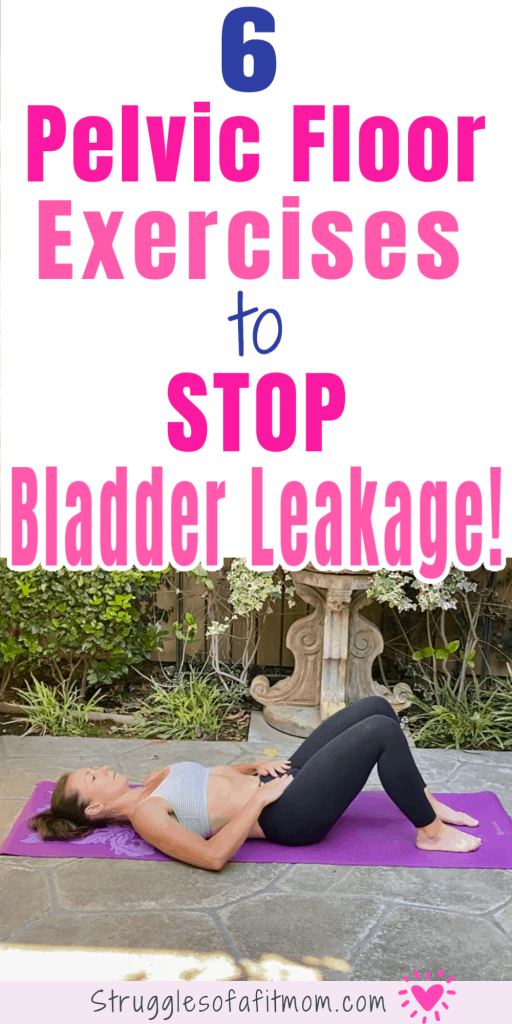

Brooke is a certified Prenatal and Postnatal Exercise Specialist with a Bachelors of Science degree in Kinesiology-Exercise Science. She is also a mom of 3 girls with more than 15 years of experience in health and fitness. Brooke’s goal at Struggles of a Fit Mom is to help motivate, educate and inspire other busy mamas who struggle with finding time, energy and motivation to take care of themselves in the chaos of motherhood.


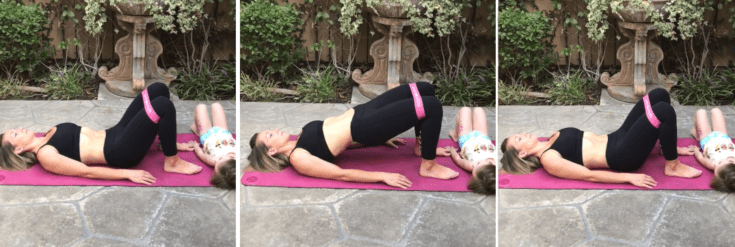

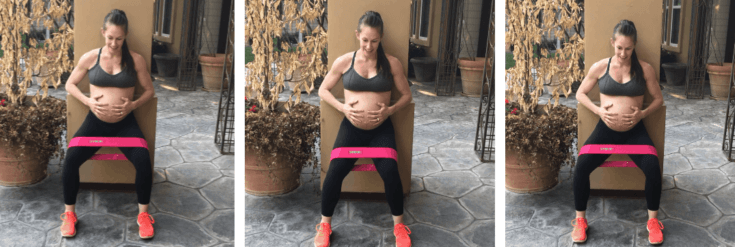
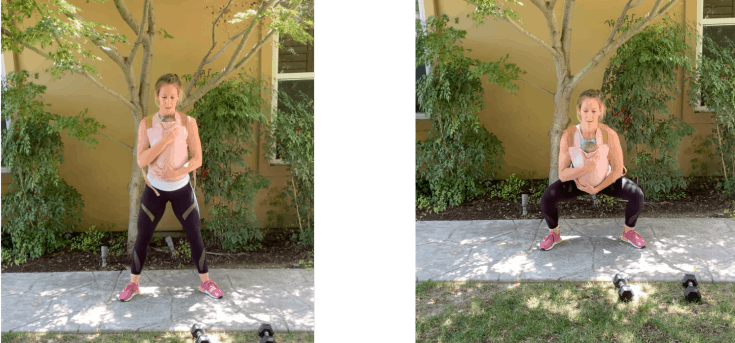
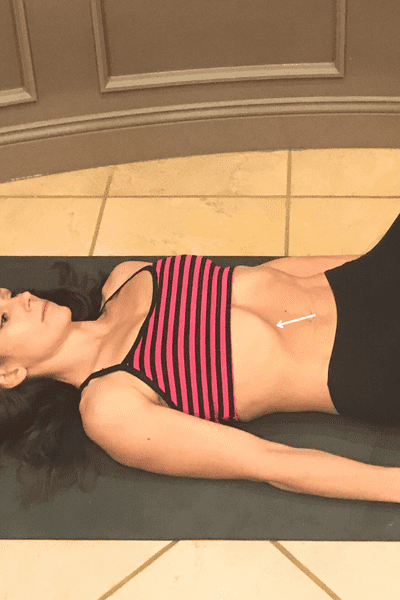


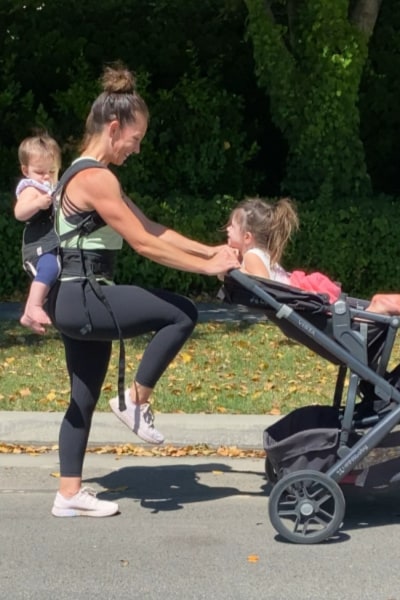


Great post!! Thanks for spreading the word.